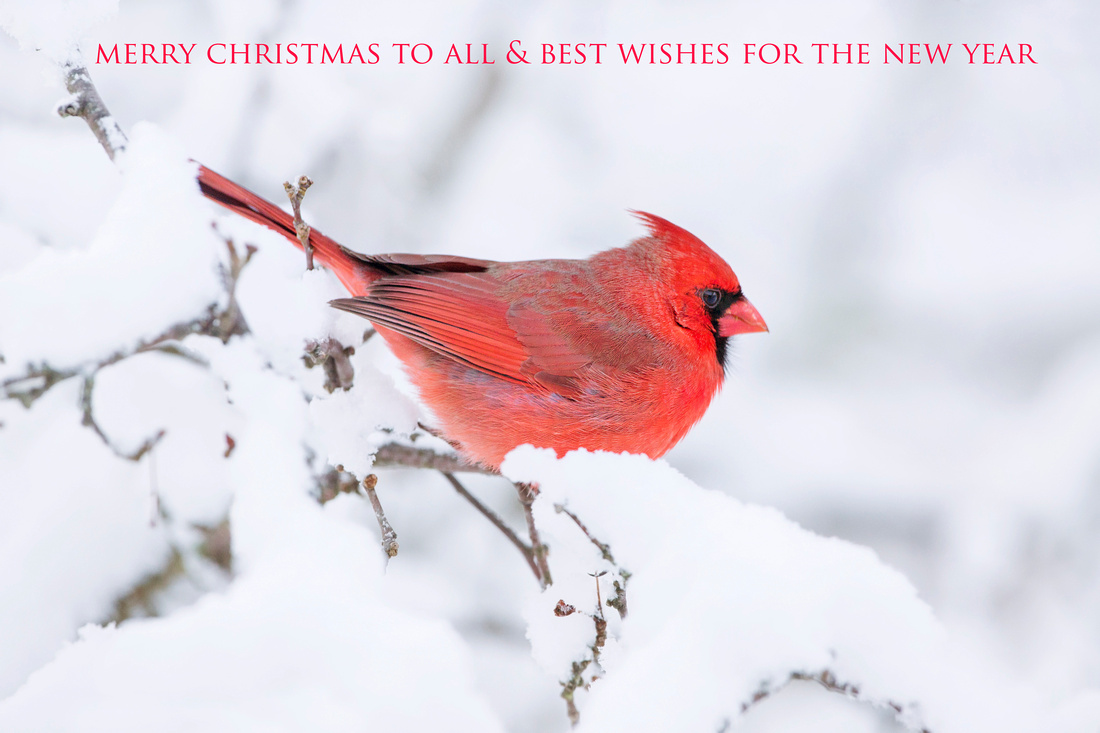

IT'S A WRAP
My Connecticut Big Year came to an end somewhat uneventfully. I came up well short of my goal of 300 state birds, but as I stated in the beginning, that might have been unrealistic. I ended with 238 different birds for the year, adding only Monk Parakeet in the final weeks. While my list fell short of the mark, it was certainly not a disappointing year in the field.
The final two weeks of December are always a hectic time and getting outdoors often takes a back seat. I had a couple chances to get down to the western half of the state, where I don't often venture, and both trips were interesting. On December 16th, I decided to head to Stratford to try and photograph the many Snowy Owls being reported there with great frequency. It was a cloudy morning a couple days after a light snow and rain had fallen. As I was driving west through East Haven, I noticed the bare gray tree branches starting to glisten, encased in ice. As I passed through New Haven, the ice covered scenery turned spectacular as the sun broke through the clouds, and I decided to hop off the highway to try and get some pictures of it.
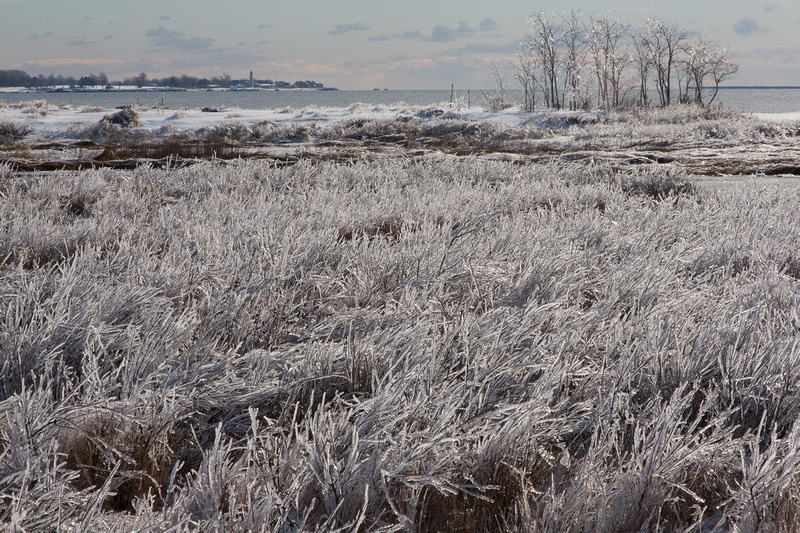

I headed to Sandy Point, in West Haven, where a Snowy Owl had been seen a few days earlier, hoping I might get to photograph one in the amazing ice show. I drove into the unplowed parking lot and my car barely cracked the crusty surface of the snow. I scanned the sparkling seascape with my binoculars, but didn't see any owls. I took a few scenic shots and decided to walk out to the point. The icy surface was a bit treacherous to walk on in places, as this picture of another walker demonstrated.
Walking along the beach, I saw plenty of gulls, Brant in New Haven Harbor and a few smaller birds darting around in the ice covered dune vegetation. A small flock of Horned Larks were feeding on the few uncovered seed heads.


A few sparrows including Song Sparrows and a pair of Ipswich Sparrows (one pictured below) also darted around the frozen weeds.
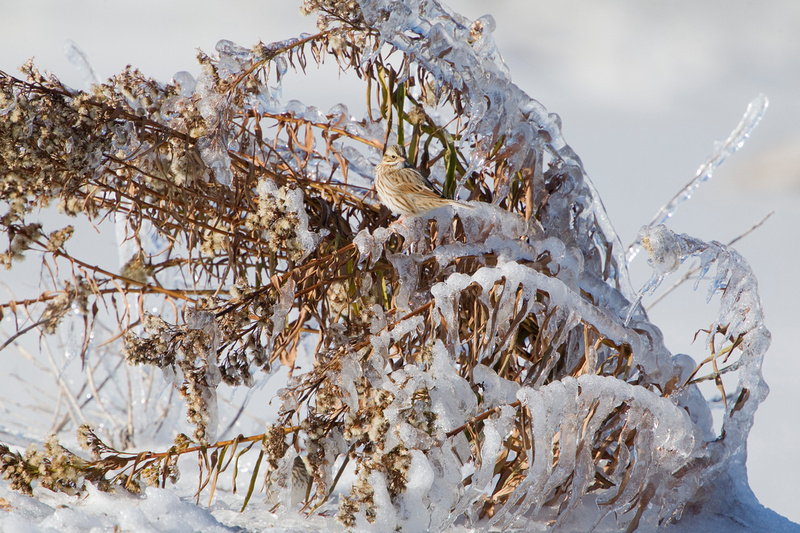

I walked well out on the point, but saw no owls. I ended up taking a lot of pictures of the glasslike, ice encrusted grasses.
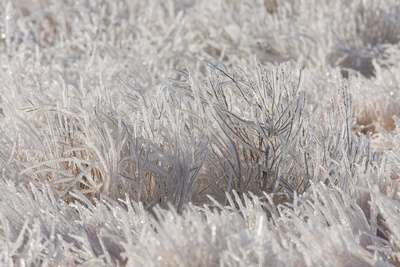





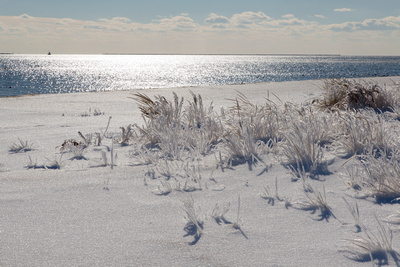

On the walk back to the parking lot another small bird popped briefly out of the grass. I couldn't identify it right away, so I followed it back down the beach a way, before it reappeared and revealed itself to be a late Palm Warbler.
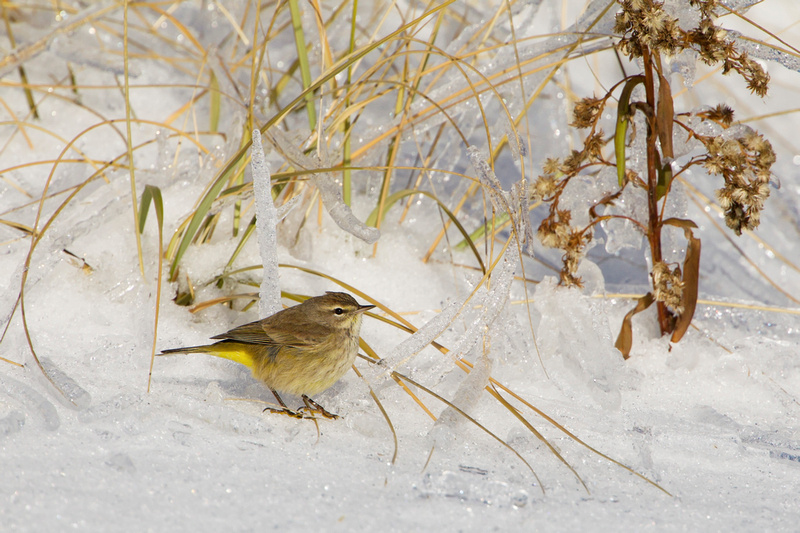

I ended up spending half the day there so Stratford would have to wait for another day. A day later a pair of Rough-legged Hawks were spotted at Hammonasset Beach State Park, and I was able to see them a couple days later. I was hoping to get pictures of the dark phase, since I don't have any, but I only saw it at quite a distance. The light phase hawk also spent most of the time hunting well out in the marsh, often across the Hammonasset River. When I arrived first thing in the morning, however, it made a few passes along the edge of Willards Island allowing me a few photographs as it hovered, almost stationary, in the brisk wind, using its tail as a rudder.


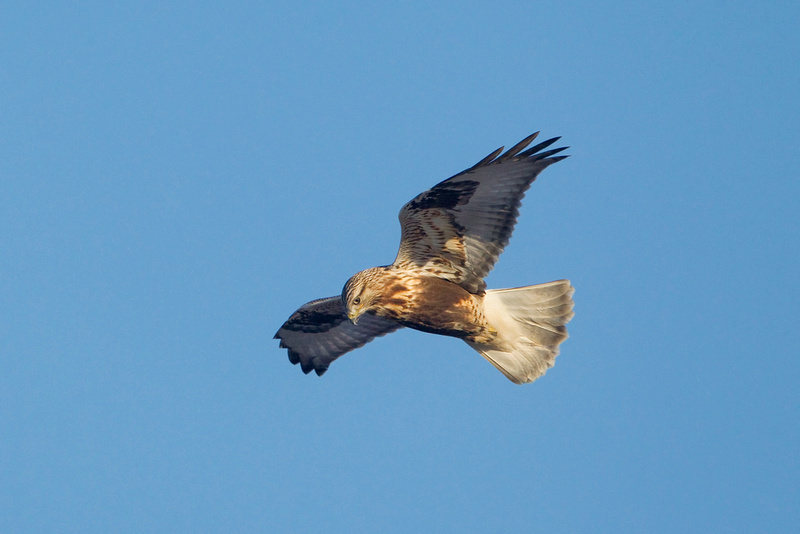

Just before Christmas I finally made it down to Stratford, stopping at Long Beach, where a number of Snowy Owls were being seen. As I was setting up my camera, a birder told me about a Glaucous Gull on the nearest breakwater. I took a few shots of it and started looking down the beach, where a Snowy Owl sat on the sand near the dunes just before the second jetty. I watched as a number of people walked past it along the waterline without disturbing it, so I started walking along the same path towards it, moving slowly and not looking directly at it. As I got closer the owl started to look alarmed so I stopped walking. It continued looking spooked so I looked behind me and saw a couple walking two large dogs along the dune line, directly towards the owl. It flew up and away, then banked and flew back toward me, gliding right over my head. I took a number of pictures of the flight but didn't have high hopes for them as I had a 2X teleconverter mounted on my 500mm lens, which I was hand holding (not the ideal setup for sharp photos!). Compounding the problem, the owl looked terrible, covered in mud on the belly, tail and wings.
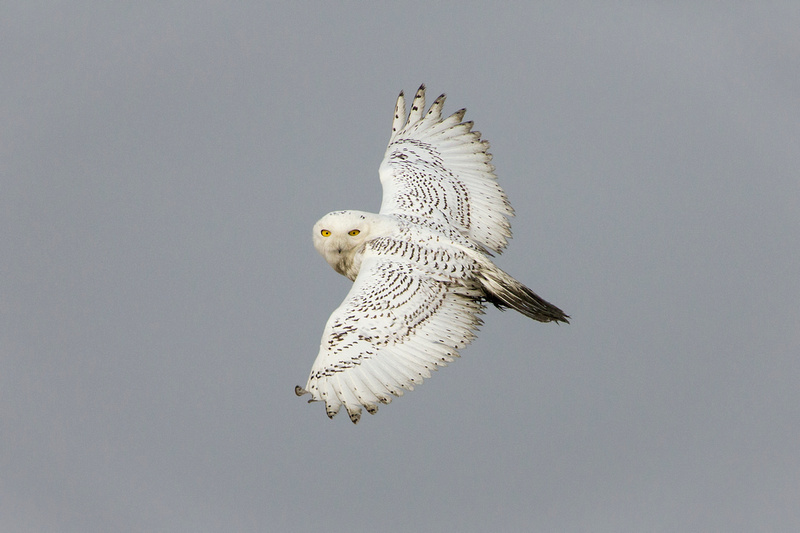

Surprisingly, I got a whole sequence of sharp photos of the owl ....
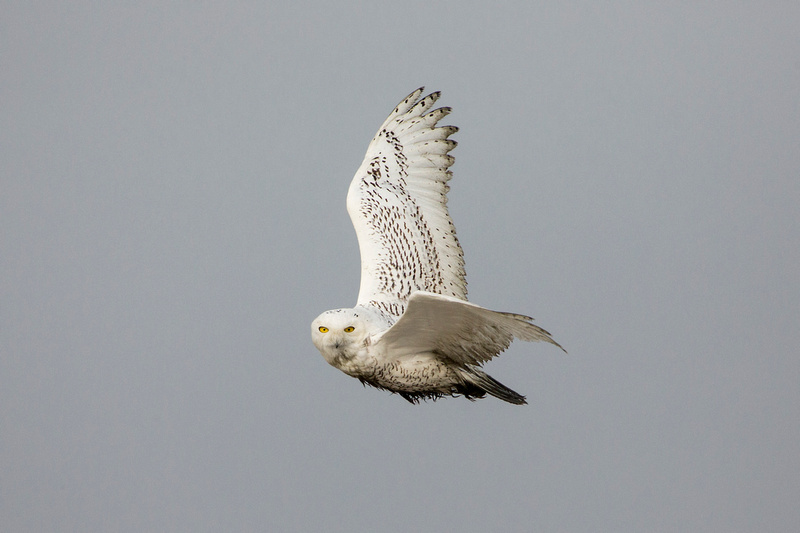

........ making the poor bird's tattered condition even more lamentable. I continued out on the beach where a photographer friend was shooting a second owl. This owl was cleaner looking and sitting up in a tree, although the clouds and fog made for a difficult photo situation. Occasionally, the sun would break through and light up the scene acceptably.


As the clouds thickened, we headed back to the parking lot to go get lunch. As we were leaving we saw the dirty owl sitting on a fence surrounded by people photographing it from all angles. The owl looked uneasy, but did not fly off. It appeared that something was wrong with it.
We went for lunch and returned to find the owl gone. We later found out that someone had called a rehabilitator who was able to pick the owl up and take it in for treatment. To end the day we went back to the first jetty to photograph the second cycle "Glaucous Gull". After I looked at the few shots I took first thing, I decided it was an Iceland Gull, not a Glaucous. When we returned to it, we both thought it was a Glaucous Gull again despite the gray wing tips, based on size, head and bill shape and behavior. It turns out that this is the infamous gull that has been stirring debate among birders and gull experts for the past two winters. There's still no consensus on the gull's identity, but the prevailing thought is that it's a very large "Kumlien's" Iceland Gull. I have no expert opinion to add, only a few more pictures.
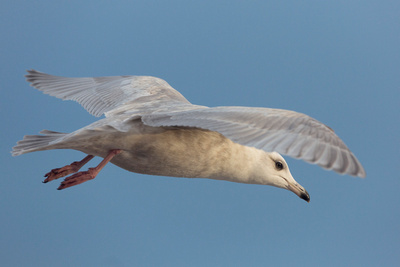

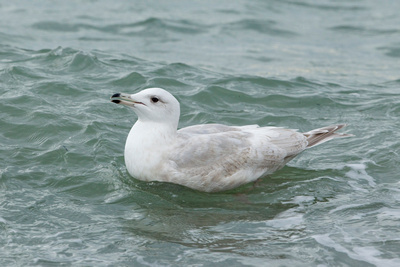





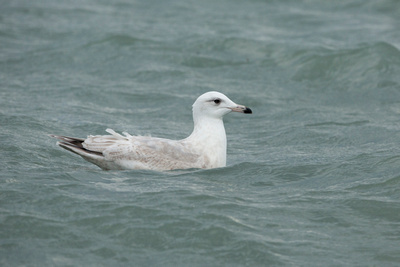

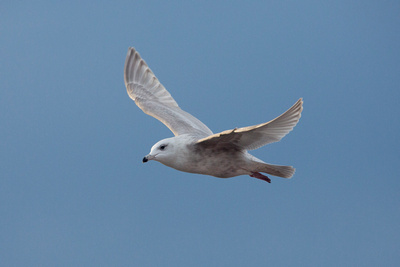

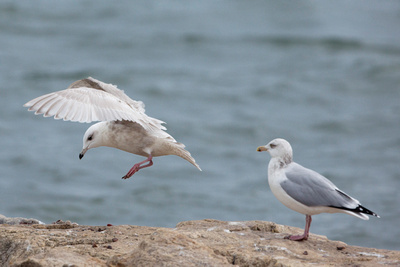

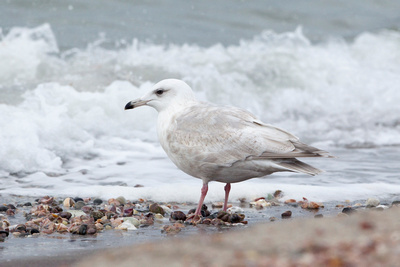

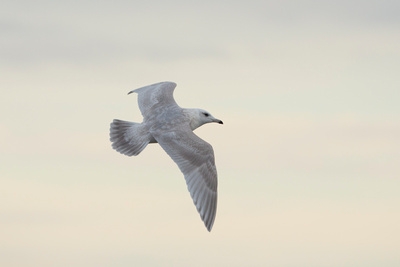

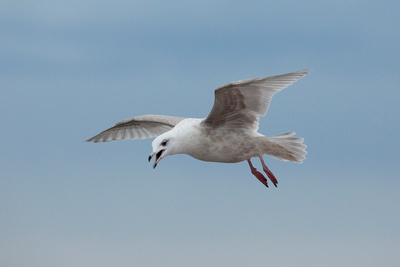

The end of the year was pretty quiet, but there was a large flock of Starlings around at Hammonasset that I spent some time photographing. I marveled as the flock swirled through the west end of the park, changing directions on a dime in unison.


At one point they wheeled around in tight horizontal swirls, known as murmurations, before I noticed a Red-tailed Hawk flying west in the middle of the flock. The behavior is a defensive mechanism to confuse birds of prey with overwhelming numbers.
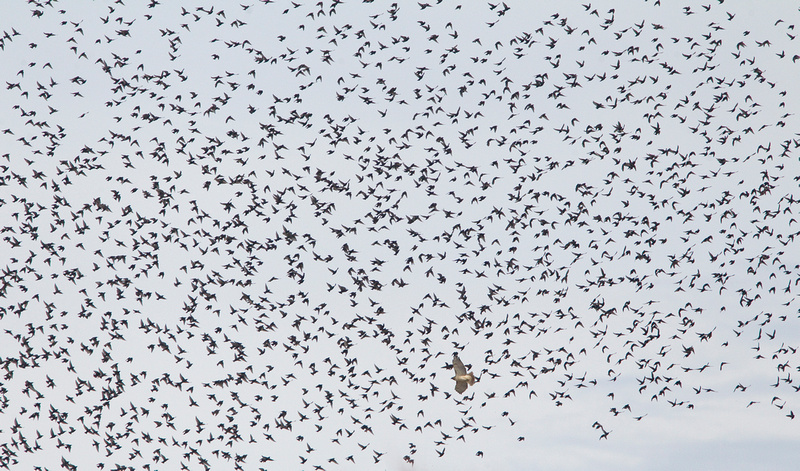

I was reviewing those pictures in the camera back and when I looked up the Starlings convulsed into a vertical comma shape. I quickly aimed the camera at the distant shape and fired off a number of frames. When I stopped shooting they were again in a long line spread out horizontally. As I reviewed these pictures discovered the cause of the gyrations, a stooping attack from above by a Peregrine Falcon that I had not even seen.


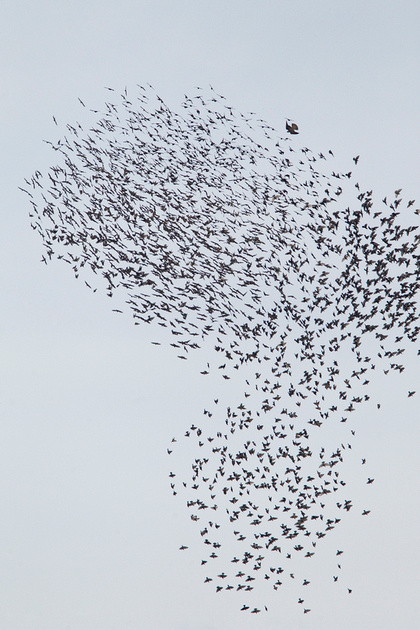

Even common and unpopular birds like Starlings can make interesting subjects. As I wrap up 2013, I look back on the many exciting observations throughout the year. It kicked off with Crossbills and Razorbills last January and ended with a spectacular South American Fork-tailed Flycatcher and the biggest movement of Snowy Owls into New England in decades. Along the way, there were plenty of great opportunities to photograph birds, from the ordinary to the exotic, that made this venture worthwhile. I'm not disappointed that I didn't see anywhere near the number of different birds that I'd hoped to. For me, it's more about quality than quantity. It's a lot more satisfying to see and photograph birds up close, even the common ones, than to compile a big list. I'll continue to work on seeing more uncommon birds, and will continue this journal on a regular basis, writing about field observations and photography. Thanks to all who followed my blog this past year.
ONCE IN A LIFETIME ...... TWICE
It would take a big attraction to draw the spotlight away from the Snowy Owls presently invading the state and region. Well, that's exactly what the Fork-tailed Flycatcher being seen for more than a week now at the Hadlyme Ferry Landing has done. It's as much about where it's from as it is the bird's stunningly long tail plumes that has birders from far and wide flocking to the tiny, potholed gravel lot. Three years ago, at about the same time of year, another Fork-tailed Flycatcher spent a few weeks in Greenwich, Connecticut. I don't usually chase rare birds that draw big crowds, especially to the opposite end of the state, but I made an exception for that bird. Since they are usually only found in Central and South America, I thought it would likely be a once in a lifetime opportunity. Who knew I would see another one a few years later fifteen minutes away from my home?
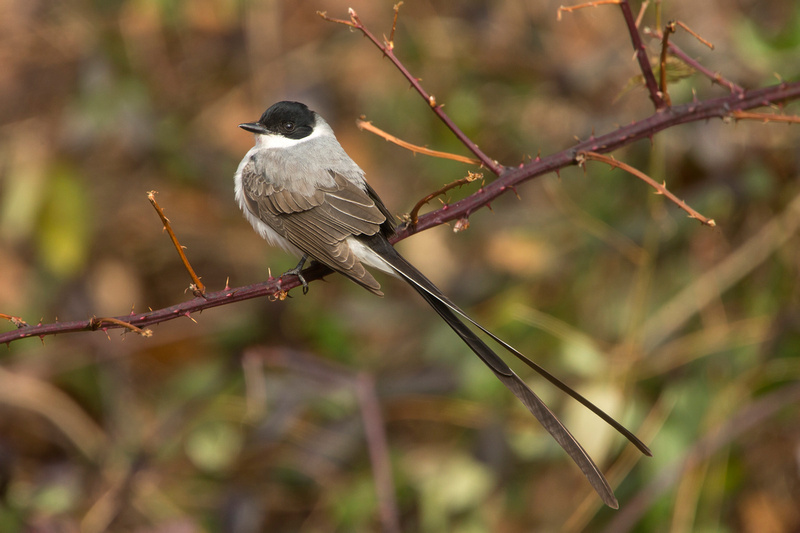

The Hadlyme Ferry Landing would usually be pretty quiet this time of year, actually all of Hadlyme would. The ferry stopped running in November, and the road dead ends at the Connecticut River. But, on the three different visits I've made to see and photograph the bird, there have been at least a dozen birders and or photographers there, coming and going all the time, all day long. Even some local residents stopped by to see the star attraction that was drawing visitors from far and wide to their quiet community. I spoke to people who drove from Massachusetts, New York and Pennsylvania to see it. One resident thought it might even be an economic boom for the Hadlyme Country Store, where he had run into a number of birders here to see the wayward wanderer.
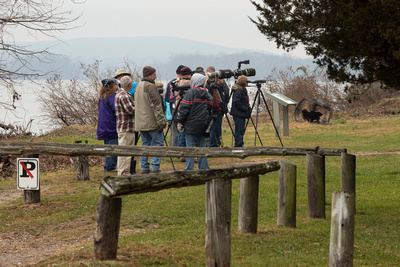

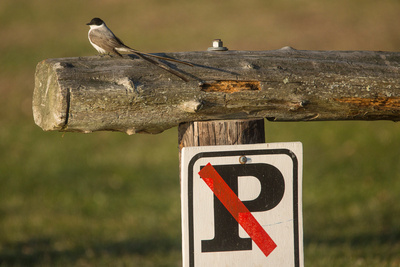

I doubt anyone visiting went away disappointed, either. This bird is not a camera shy, and often sat perched in the open at various spots around the tiny parking lot and lawn, posing for the crowds. Given its behavior, and the amazing number of people with cameras, it's probably one of the most photographed birds in state history. And it's not a bird you need to get that close to, either. On my second visit, while the crowd was at the far end of the little park looking for the bird, I waited near a tangle of vines in the middle that it frequented. As the bird flew in, I heard someone from behind me call out "there it is" and then "it's right over your head". The bird landed on a post right in front of me, too close to fit the whole tail in the frame. I took a couple shots and quickly tried to remove the teleconverter on my lens as the group from the far end closed the distance quickly. Just as I got the converter off and the camera back on, the pack closed in and the bird flew off.
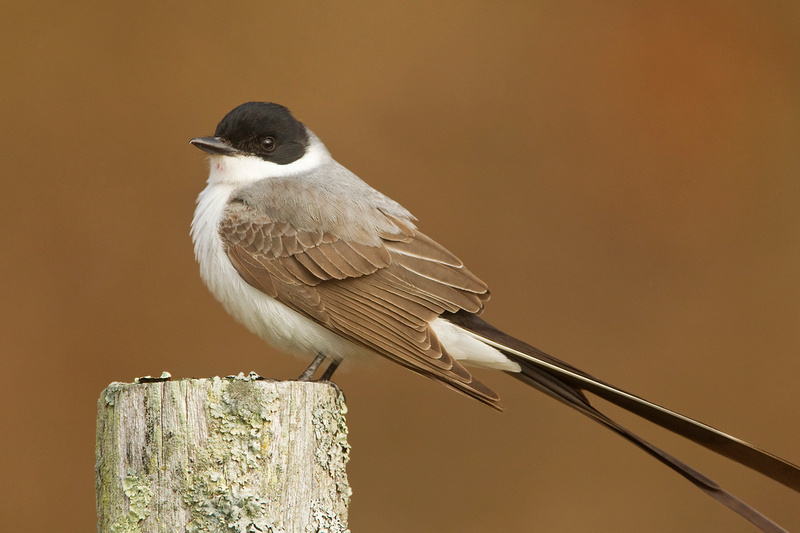

Fortunately, on my next visit I planned accordingly and was able to get the shot I'd missed days earlier.


It's strange to think that these birds, whose normal range is thousands of miles farther south, and whose diet is primarily insects could wind up in Connecticut, twice in three years, just as winter is about to get going. The theory is that instead of migrating south during spring in the southern hemisphere, one will occasionally head in the opposite direction, winding up more than 1000 miles to the north instead. As with the one in Greenwich, this one seems to be finding enough insects considering the time of year. It's also supplementing its diet with berries, like pokeberry, pictured below.
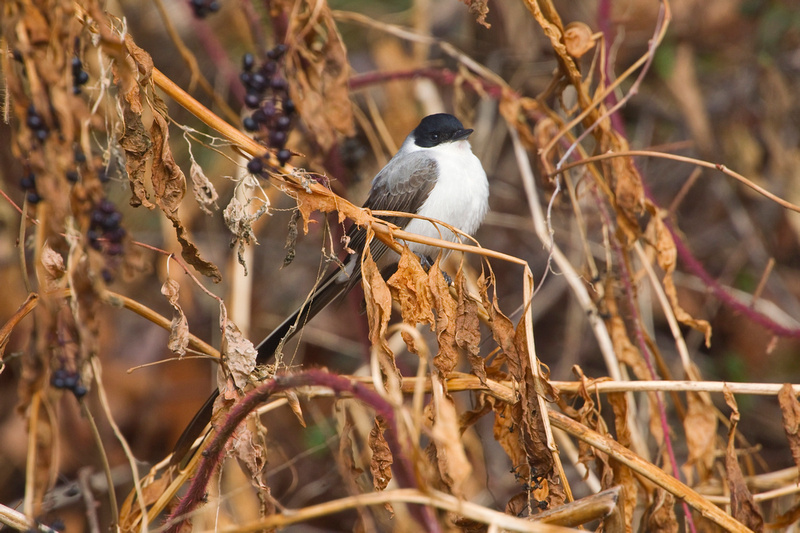

On one of the warmer afternoons, there were definitely some bugs buzzing around and the bird was flying out and snapping at them. I was hoping to get pictures of the bird in flight, especially flycatching. Taking my camera off the tripod, I trained it on the bird as it perched in the branches and tried to anticipate which direction it would fly out. All I got were some tired arms from handholding the camera and a few marginal flight shots for the effort, but it was fun to watch. I only hope the bird has the sense to head south before winter really sets in.


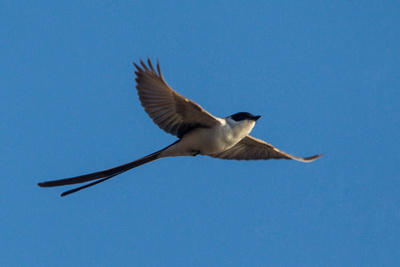

The Snowy Owls in Connecticut didn't completely take a back seat. Most of the sightings lately have been in the southwestern part of the state, but there have been a few reported from Hammonasset Beach State Park, in Madison, as well. I was able to photograph one there last week on the jetty at Meig's Point, along with a whole group of photographers.
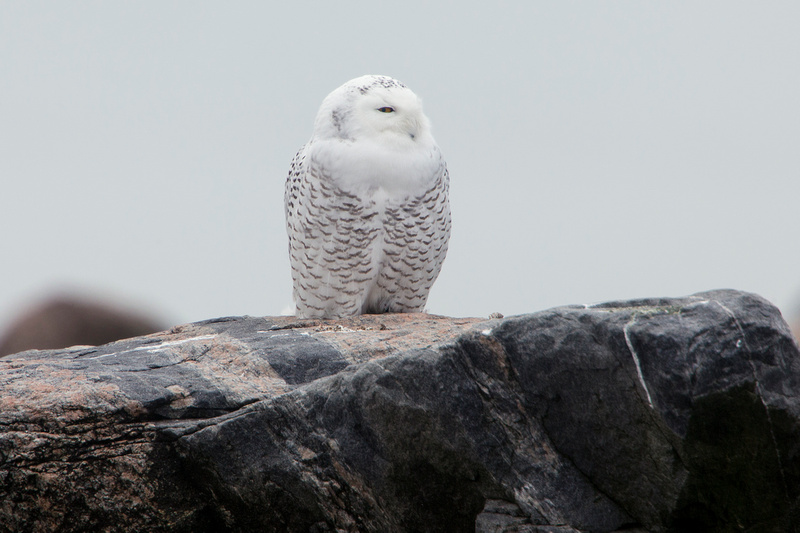

This one was a lightly barred bird that sat calmly on the rocks, allowing a group of photographers to shoot from the beach at a respectful distance. I used two teleconverters, a 1.4x and a 2x, stacked together to get tighter shots while it sat quietly. As it started to stretch and preen, I took the 2x off in case the bird flew. The time stamps on my pictures show that I was there for more than 15 minutes before the bird took flight, and many were there long before I arrived. I don't think anyone moved any closer to the owl the entire time I was there. Over the weekend, another was spotted off Cedar Island and there were dozens of people out there looking for it. There were also an amazing number of photographers toting big lenses, and it's fascinating for the few of us "old timers" to see how many more people there are now that share our craft.


At Hammonasset, I saw the Clay-colored Sparrows reported in the campground, mixed in with a big flock of juncos. While looking for them, I also saw a Pine Warbler and a Blue-headed Vireo.


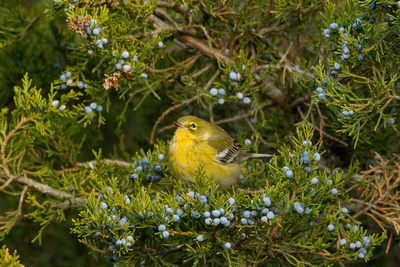

So far, the female King Eider at Harkness State Park, in Waterford has eluded me on two occasions, but I did see a flock of 17 Purple Sandpipers there while looking for it.
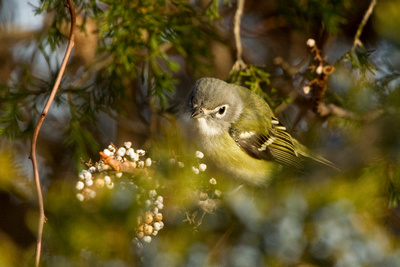

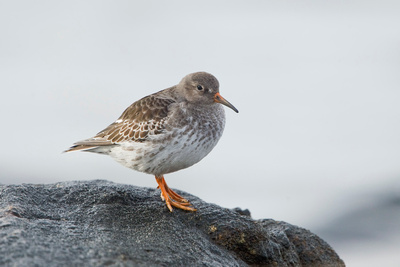

I added three new birds in the past week, including Clay-colored Sparrows, Snowy Owl and Fork-tailed Flycatcher, bringing my year total in Connecticut to 236.
FOWLS AND OWLS (AND FOULS)
What's the old saying about weather in New England? .... if you don't like it wait a few minutes. Well, you can add birding to that, too. Okay, make it a few days instead of minutes. After struggling to find much to see and photograph a week ago, this week the feathers were flying and the pixels burning. It started unwittingly last Monday, at Hammonasset, scrounging a few pictures of the usual winter denizens, small flocks of Horned Larks scattered around feeding in the grass and gravel lots, joined by five or six Lapland Longspurs.
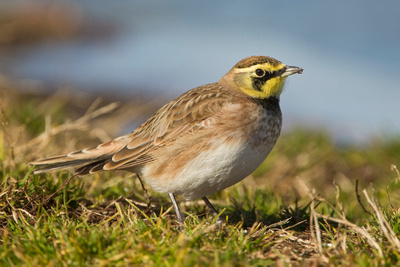

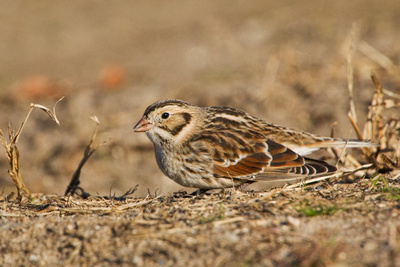

I was about to give up for the day when I saw that Keith Mueller reported a Greater White-fronted Goose in Durham. I decided to take a look since it was nearby and I haven't seen one this year. When I arrived there were about 100 Canada Geese tightly packed in the back end of the pond. Scanning the flock, I saw a few female Common Mergansers, Ruddy Ducks and Mallards, but no GWFG. I kept looking for 45 minutes as the Canadas slowly broke their tight formation and drifted towards the center of the pond, and a few made their way to the near edge of the pond. There were plenty of smaller Canada Geese of different races to look through, although none appeared to be Cackling Geese. Finally, I spotted a tiny goose in the center of the pond with its back to me. When it turned around, there was the GWFG. Eventually it joined the Canada Geese at the near end of the pond, then waddled out right in front of me and started feeding in the grass field.


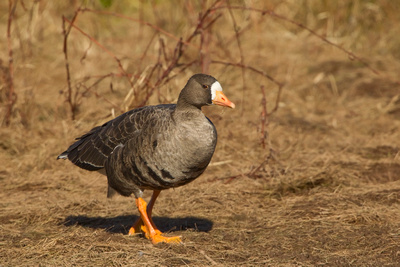

As I was heading home I saw a Barred Owl perched low in a tree at the edge of the road in Old Lyme. It was mid-afternoon and it appeared to be hunting. I was able to take a bunch of pictures from my car window without it flying off.
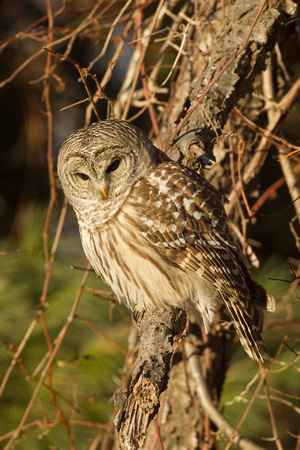

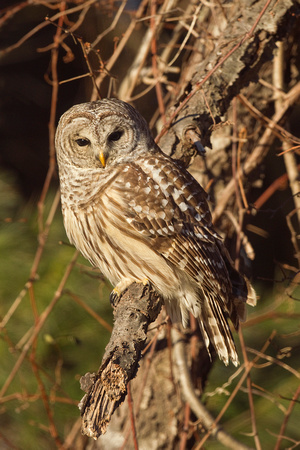

Since I was on a roll, I stopped at the Great Island boat launch to look for owls. I try to check there at sunset for Short-eared Owls flying over the island, but have not seen any there in a few years. With the influx of Snowy Owls to the region the possibility was there for one of those, too, but the only thing I saw was a Northern Harrier.
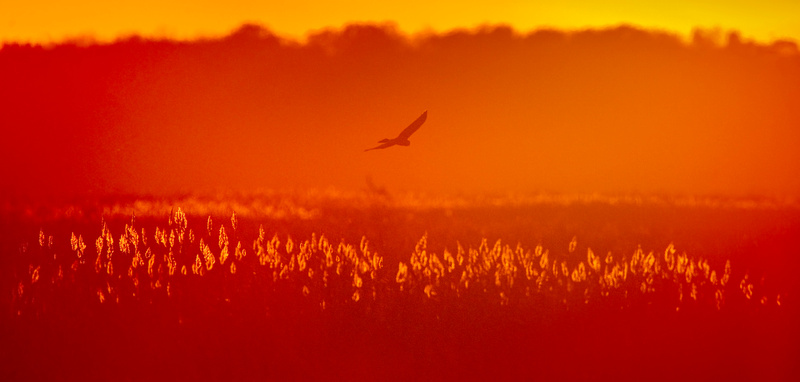

On Tuesday I had to pick my daughter up from school in Boston. Hoping to avoid potential traffic, we decided she would take the commuter train to Attleboro, MA so I decided to check a few spots in Rhode Island on the way there. My first stop was the Charlestown Breechway, where the first thing I saw when got out of the car was a Snowy Owl on the dune across the channel.
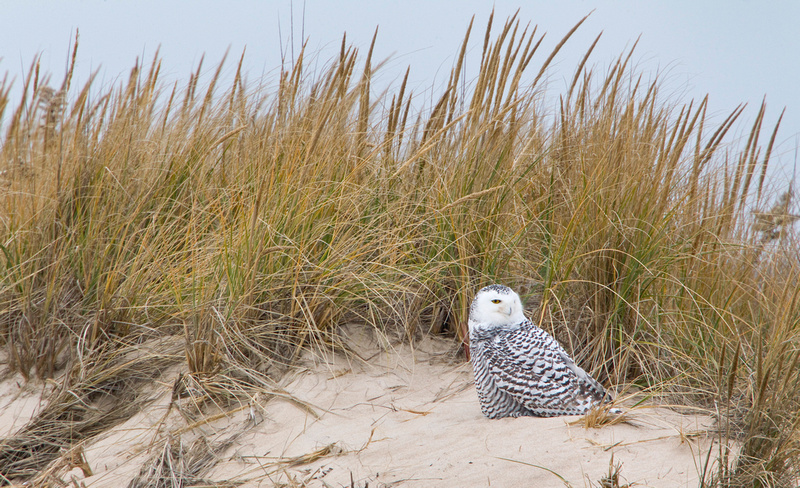

I told a Rhode Island birder about it and asked about the protocol for posting owl locations in the state, because Rhode Island has a private bird list that I'm not a member of. He said that the policy is not to report owls and asked me not to post the sighting. After quick stops at Trustom Pond and Moonstone Beach I left for Attleboro. We got home after dark to find that we had avoided a 33 mile traffic jam on the Mass Pike leaving Boston and that Hank Golet found a Snowy Owl at Great Island. Later that night I saw that the Charlestown owl was posted on the RI ABA site that is rarely updated. I checked for the Snowy at Great Island in the rain early Wednesday morning but saw nothing.
After a great Thanksgiving, I headed out early Friday morning hoping to avoid anything related to Black Friday. Arriving in Charlestown as the sun rose, there were at least a dozen Common Loons at the mouth of the breechway. There were a few fisherman and their pickup trucks across the channel in the area I saw the owl Tuesday, and an owl was perched on the sand fence father down the beach (at far left, below).
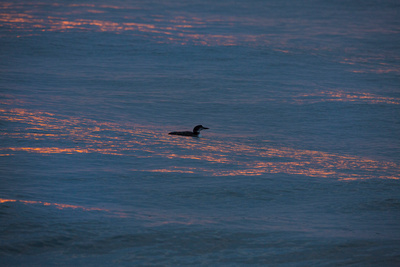

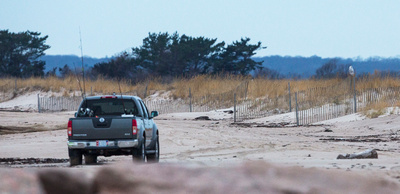

I thought there was another lighter owl farther down the beach, but it was too far to be sure. While I was watching across channel, another darkly barred first year owl flew down the beach from behind me and landed on the rocks fairly close to me.


This owl looked skinny and perched with its wings hanging awkwardly before flying across the channel to join the other owl in the area the fisherman had since departed. Although I never saw all at once, I believe there were three owls on East Beach near the breechway, two darkly barred ones (pictured together) and a lighter one (at right).


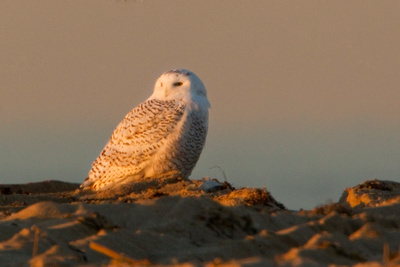

Next, I headed to Sachuest Point NWR in Middletown, RI to join a friend who photographed one of the Snowy Owls there. The owl was still sitting on the rocks at the edge of the water and dozens of people at a time stopped to look at it from the trail above.


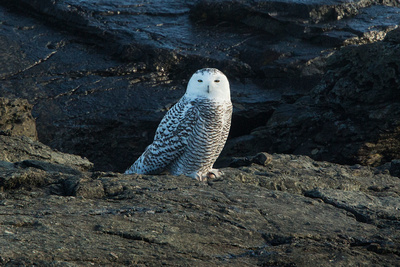

Nothing draws crowds of spectators, including birders, photographers and casual observers like Snowy Owls, a rock star among birds. This combination of crowds of people with a wide spectrum of experience and interests and spectacular, rare birds is a powder keg that invariably explodes. The owls are here because there is a food shortage in their normal range, and there have already been several venomous exchanges on the Massachusetts and Connecticut bird lists about people harassing them. It's silly to generalize, and blame groups of people for the behavior of a few, but it's also unrealistic to expect no human disturbance to these owls in such a crowded region as southern New England.
While we were watching the Sachuest owl from the trail along with many others, I wondered aloud what the owl might be thinking about the crowd of people who just stared at it, not posing any apparent threat. Many were people just out for a walk with their families, and stopped to see what the attraction was. Some climbed on the rocks nearby, a common activity there, but were eager to steer clear of the owl when alerted by onlookers. But as I was setting up my camera before walking out to the owl, a young man approached and asked if I was going to photograph it. He was excited to show me the picture he got of the flying owl. "Does that mean it flew away?", I asked as he showed off the nearly full frame picture of the owl taking off from the rocks that he shot with his 70-200mm zoom lens. "It came back", he replied, but I'm sure the damage to the reputation of "photographers" was already done.
The situation in Charlestown is even more complex. It is an area that is frequented by fishermen, duck hunters, rabbit hunters, dog walkers and off road enthusiasts. Most of these people are just going about their usual routine, not intending to disturb the owls, but it's unavoidable. Fisherman fished from the breakwater, while the owl tolerated their presence from the rocks on the opposite side. But when a boat went through the channel the owl was flushed from a favored perch.
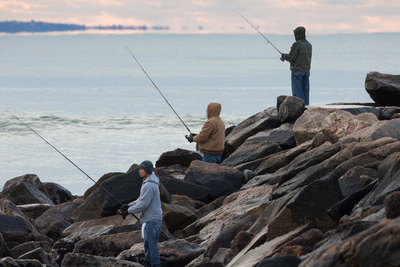



Later, a jeep made it's way down the two mile stretch of beach, chasing the owls back to the east, directly towards me.
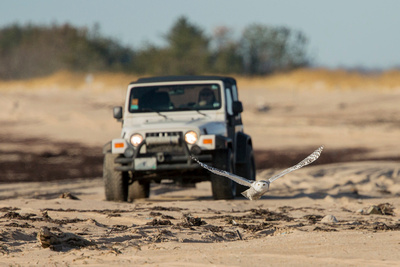



All these pictures were taken from a distance with a long lens, and some are cropped significantly. I got some unexpected chances and took advantage of some unintented disturbance of the owls, hopefully without committing any "fouls". I hope the owls stick around for a while, but they might not if they can't find enough food or are continually harassed. It would be great to get some closer pictures but it might be better to wait until the novelty wears off, and some other rarity like a FORK-TAILED FLYCATCHER (.... next post) shows up and draws the crowds away from the owls.
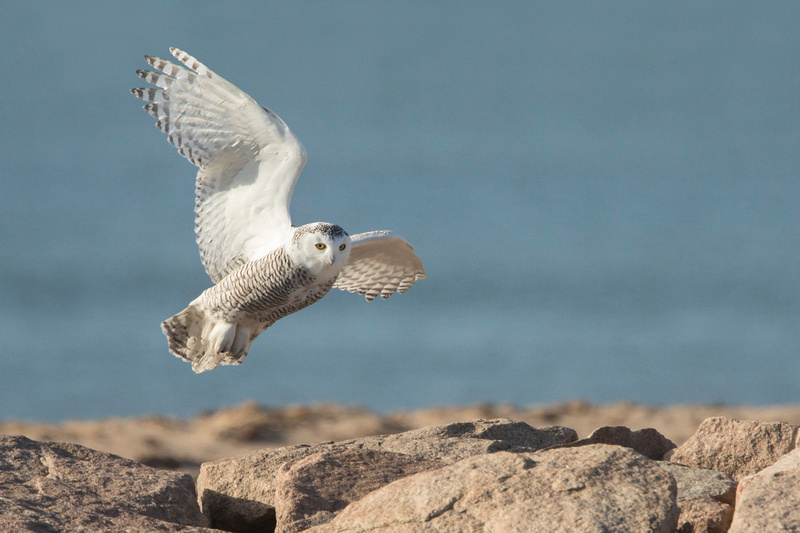

BERRY PICKING SEASON
With fall migration winding down and winter on the way, this time of year can get pretty slow for bird photography. I just put my bird feeders out and have not set up any photo perches yet. Winter waterfowl are coming into the state, but with no ice yet, and lots of open water it's hard to get anywhere near close enough to photograph them. Many ducks are still molting into their breeding plumage and don't look their finest right now, anyway. So with the potential for a slow period, finding good photo opportunities in this transitional time is always a blessing. While driving through Old Lyme last week, I saw an odd looking bird (it looked like a flycatcher) on the side of the road and I quickly stopped to check it out. Naturally, it immediately flew into the roadside brush, never to be seen again. But as I was looking for it, I noticed a lot of birds flying back and forth to a lone standing bush well off the road. It was loaded with red berries, and birds were hopping all over it.
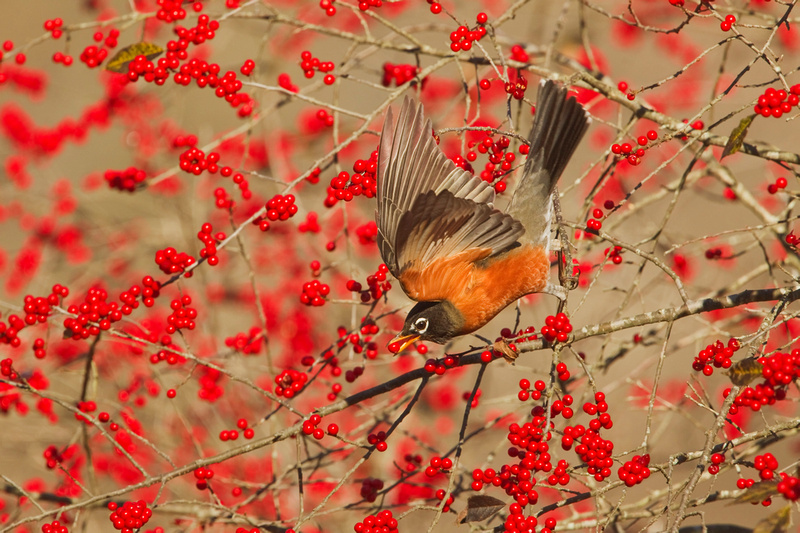

Grabbing my camera, I walked closer and saw that it was a Winterberry bush, and it was under attack. I set my camera up quickly and started shooting. The first birds I saw were American Robins, nearly a dozen at a time. They were feasting on the berries with little concern for my presence, reaching to grab a choice one, and gulping it down whole.
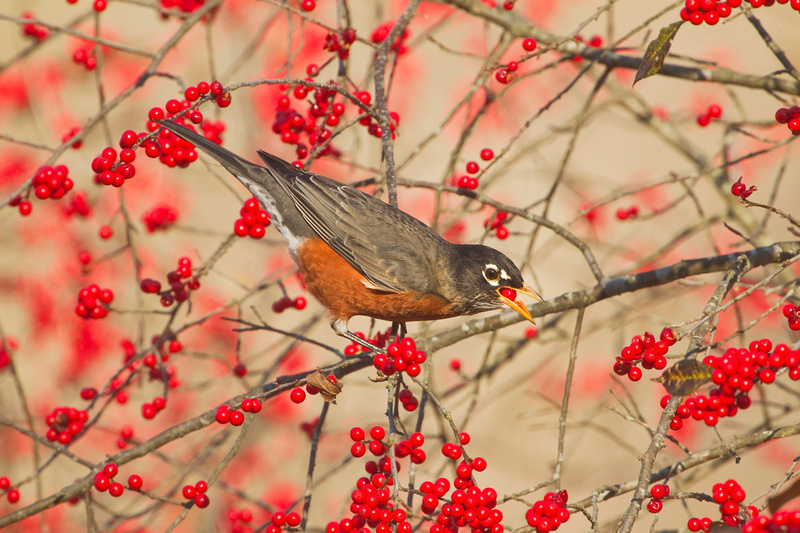

Soon I heard familiar high-pitched whistles, and a small flock of Cedar Waxwings descended on the bush, joining the robins at the all you can eat buffet.


A Red-bellied Woodpecker also joined in, hanging upside down while it fed.
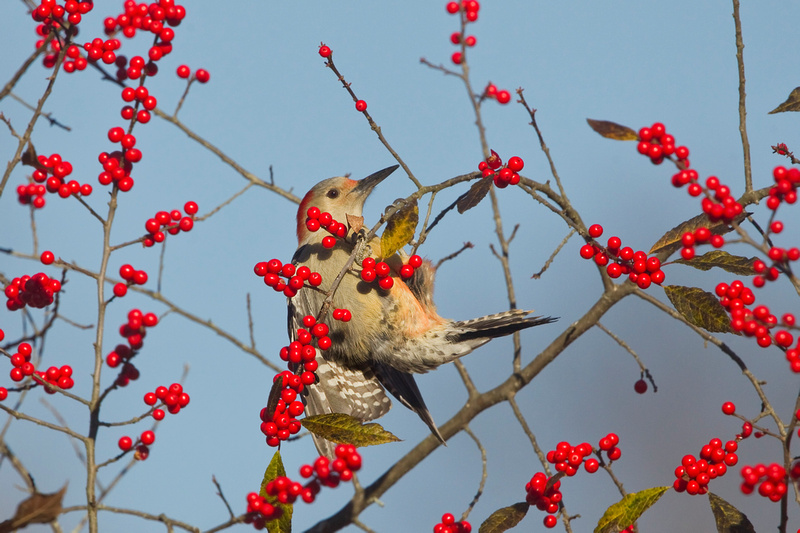

Next to arrive were two pairs of Eastern Bluebirds, although the males kept to the other side of the bush.
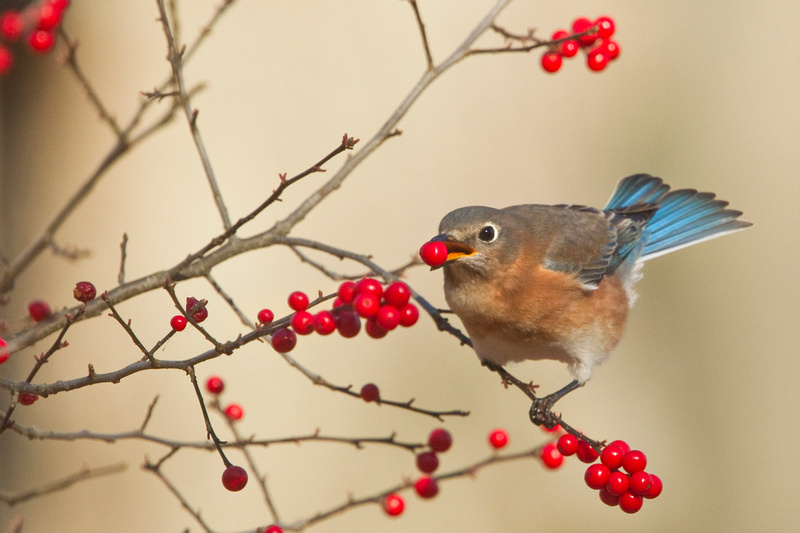

Even a White-throated Sparrow sampled the berries, crushing them with it's beak to eat the inner parts.
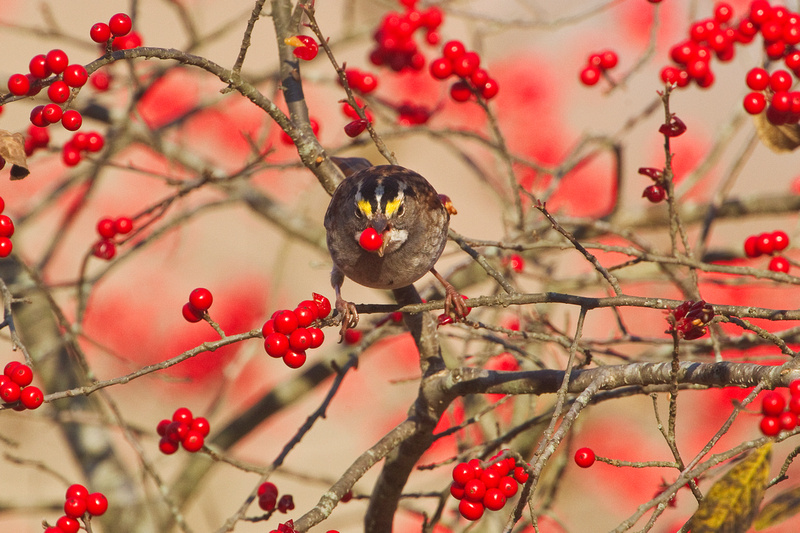

I had to leave for the day, but came back a few days later to find the bush had a lot fewer berries. There were still lots of birds in the area, though this time they were more spread out. Walking down the street a way, I found a flock of Cedar Waxwings feeding on a crabapple tree nearby.
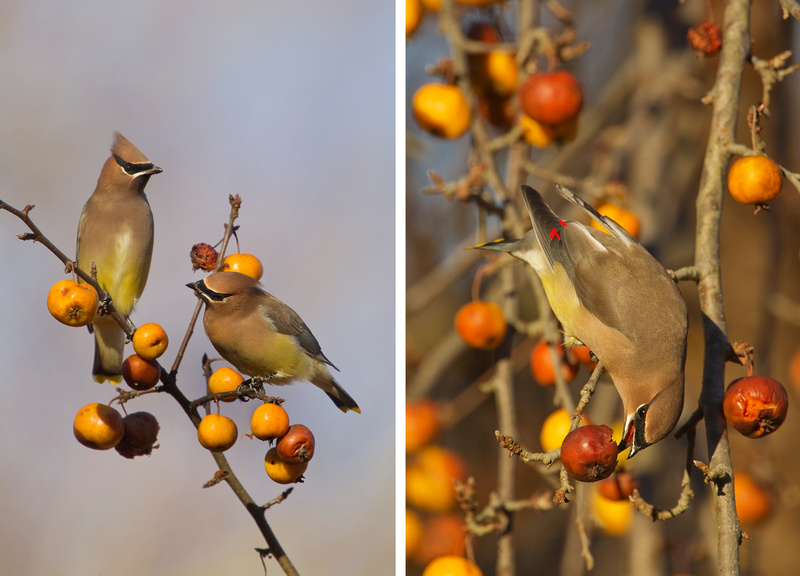

Finding a good food source is one of the best ways I've found to get close enough to birds to photograph them. In the late fall and into the winter, when insects become scarce, finding a good crop of berries like these can turn out to be a gold mine. It was puzzling that so many birds were eating Winterberry so early in the season. I've always thought that it's one of the last berries that birds eat, lasting late into the winter, but there doesn't seem to be any rhyme or reason to the birds' berry picking schedule.
In my yard there is a flowering dogwood that is a prolific berry producer. Every fall, a day arrives when birds decide that the berries are ready to eat. I try to watch it closely, hoping to photograph them, but there are years when I come home one day and the berries are gone, picked clean in a matter of hours. This usually occurs in November, and it's always the same birds, American Robins, European Starlings and the occasional Northern Flicker that eat the berries.


In 2012, the birds decided the berries were ready in early October, a month earlier than usual. The robins, starlings and flickers were all there, but because it was so early there were also some unexpected guests. These included Scarlet Tanagers, Swainson's Thrushes, Brown Thrashers and Gray Catbirds.


The truth is, I've photographed birds eating berries in all seasons. I also have a honeysuckle bush in my yard that draws the a crowd of birds, and for years I have photographed robins, catbirds and waxwings from my back deck as they swarm when the berries ripen in July.
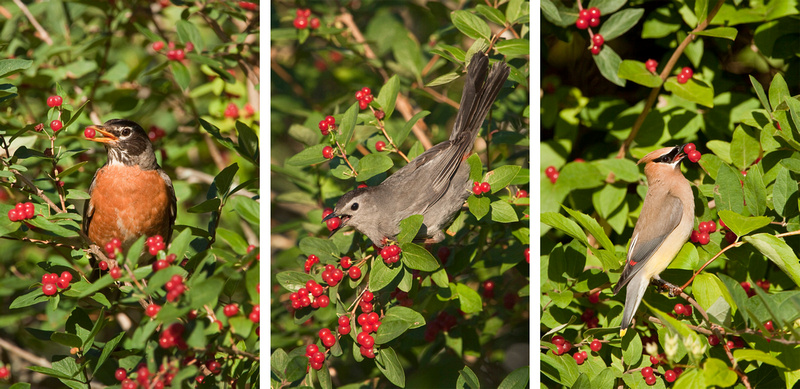

Even though these are common bird species, the bright red berries make for attractive pictures, the kind that calendar and magazine editors always seemed to like. One of my backyard berry pictures was chosen for a magazine cover years ago.
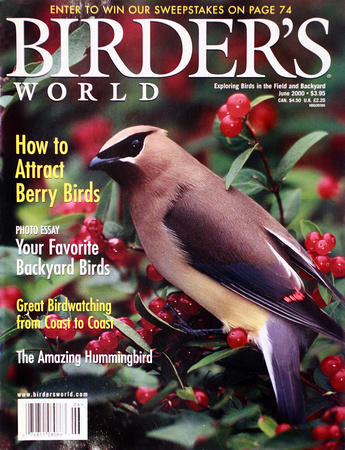

So it's a good idea to keep track of the trees and bushes in your neighborhood that produce berries that birds eat, because for birds and photographers, berry picking season can be quite a bounty.
Elsewhere, I was able to see three new birds this month, including Cave Swallows at Hammonasset, a beautiful drake Eurasian Wigeon found by Hank Golet in Old Saybrook and a Long-billed Dowitcher at Rocky Neck bringing my total to 233 this year, still way short of my goal.
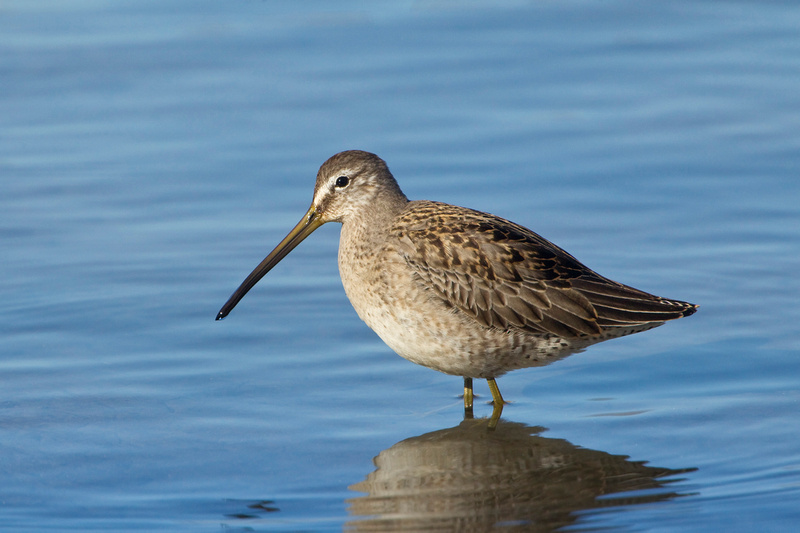

The dowitcher was first reported two weeks ago, and after checking for it several times with no luck I had given up hope of seeing it. More than a week later, it reappeared, in the company of some Greater Yellowlegs and stayed until November 20th. Now if I could have the same luck with the Short-eared Owls I keep missing and a few of the Snowy Owls showing up in neighboring states can make there way into Connecticut it could be an interesting winter.

